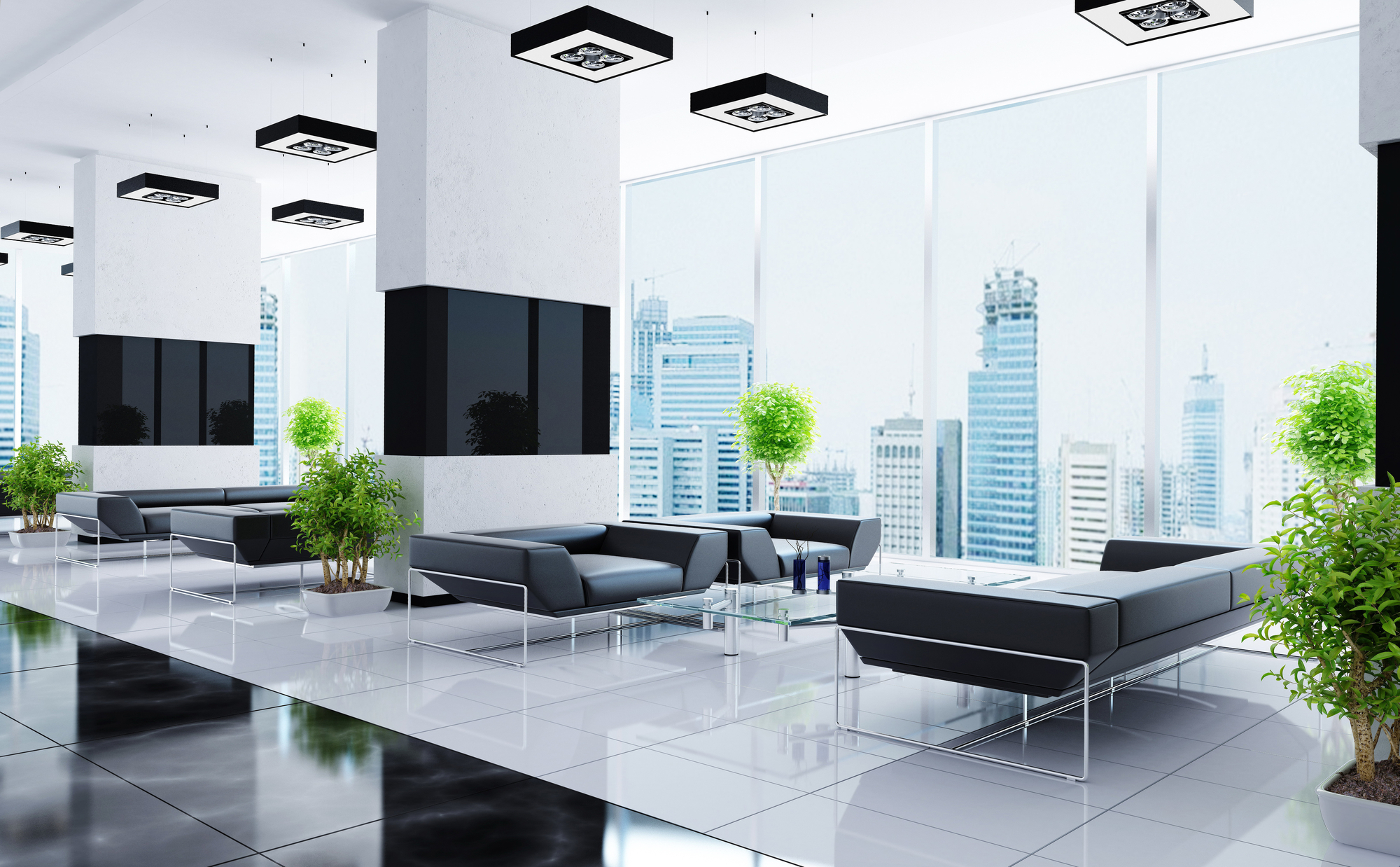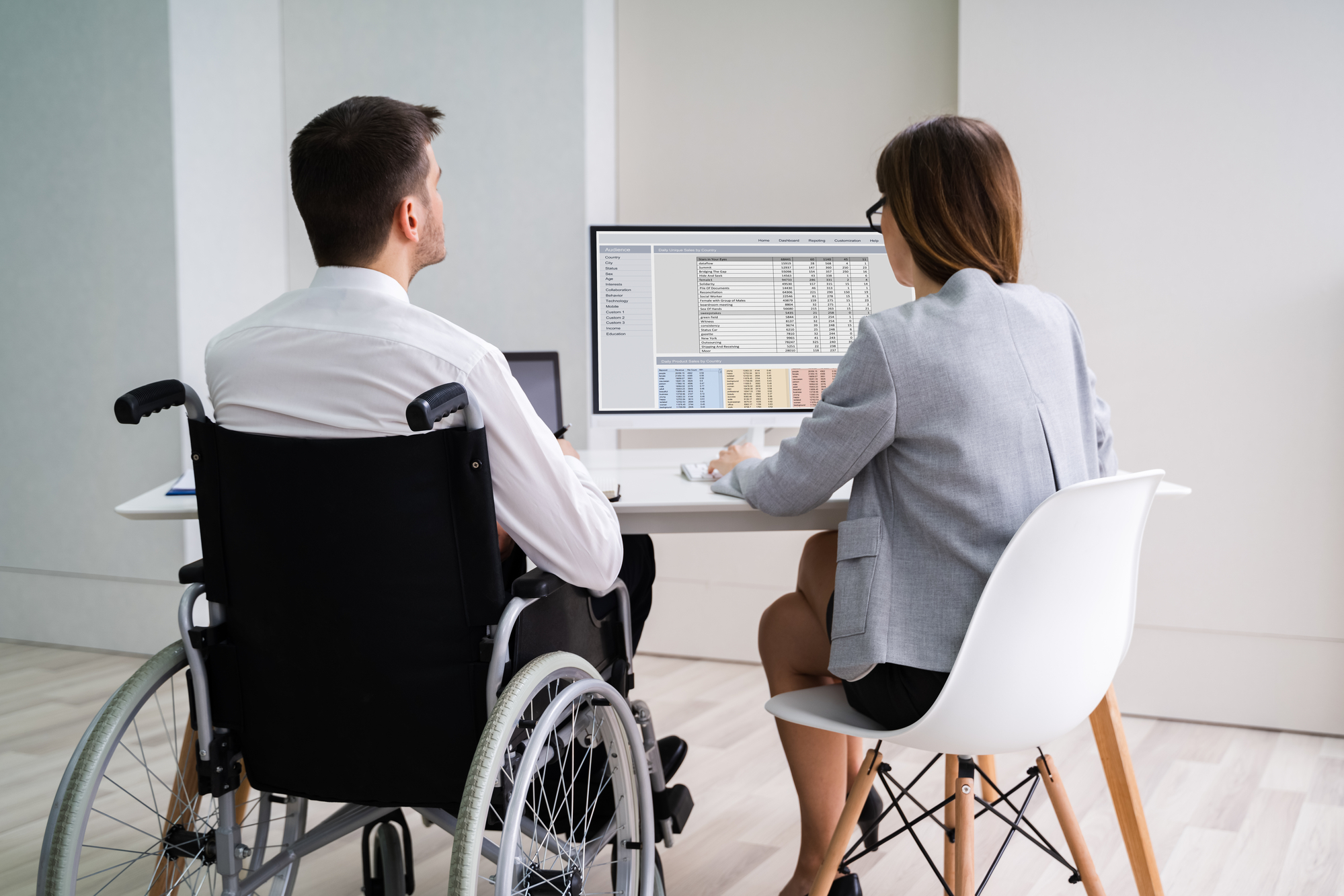Workplace leaders, listen up: It’s time to ditch the one-size-fits-all-brains approach to office design. The human brain works in all manner of ways, as reflected in today’s neurodiverse workforce—and the workplace needs to step up to the job, too.
Understanding neurodiversity starts with recognizing that a range of cognition exists, including autism spectrum condition, ADHD, dyslexia, dyscalculia, and dyspraxia. While each has its own unique attributes, people with neurodivergent conditions generally experience spaces differently than other members of the population.
Take me, one of many people whose cognitive experience of the world may differ somewhat from yours. You’d never know if I didn’t tell you, but I’m dyslexic, which means I approach problems—and, yes, space—differently than other people. It also means signage is not the most helpful tool when I need to quickly navigate an unfamiliar space.
But while neuro-minorities comprise at least 15 to 20% of the world’s population you’ll almost never hear it mentioned in diversity, equity, and inclusion programs. We need to change that now, particularly with the ‘great return’ to the office. After two-plus years amid the comforts of home offices, neurodiverse people with higher sensitivity to physical surroundings are even more likely than others to experience stress and anxiety in returning to crowded, noisy offices where it’s hard to focus, collaborate with confidence, or simply feel at ease.
By taking purposeful measures, however, organizations can ensure their office spaces reflect the diverse ways employees experience the physical environment.
1. OFFER WORKPLACE CHOICE
 First and foremost, create distinctive settings where people can choose to go based on both their work and their sensory comfort. According to BBC research, employees and visitors with neurodiverse conditions often process sounds, sights, and smells differently than other staff might. And even though fresh collaboration opportunities are one of the key things organizations are currently seeking in new workplace design, Steelcase research shows that privacy can be just as important.
First and foremost, create distinctive settings where people can choose to go based on both their work and their sensory comfort. According to BBC research, employees and visitors with neurodiverse conditions often process sounds, sights, and smells differently than other staff might. And even though fresh collaboration opportunities are one of the key things organizations are currently seeking in new workplace design, Steelcase research shows that privacy can be just as important.
The number one way to accommodate the many different ways people work is to offer a menu of intentional spaces—including quiet areas for focused work, higher-stimuli settings for group work and socializing, and recharging stations. Recharging stations could be a dimly lit, private room with a comfortable couch or chair, calming music and perhaps a yoga mat to encourage meditation or restorative movement. Regardless of the specific approach, be sure to incorporate clear design cues about the space’s intent so people know what to expect in terms of acoustics, privacy, light, and other sensory elements.
When designing different workspaces, provide variety within those categories, too. While many people may thrive in conference rooms surrounded by glass walls, others may feel like they’re in a fishbowl, and feel less confident sharing their ideas with the team. Provide both types of space, including open collaboration areas and rooms with solid walls and doors you can close.
Consider, too, how excess and unexpected sounds can be stressful for some people. In addition to providing small focus rooms with soundproofing materials where people can trust their conversations will be private, it is also helpful to create quieter collaboration areas that use furniture and plants to bring privacy within a larger open space and shield employees from the distraction of passing conversations.
2. RETHINK THE POWER OF LIGHT AND COLOR

Happy young woman manager in casual attire and glasses smiles and looks into a laptop, looking through different information, she drinks coffee in a cozy cafe with large windows and a view of the city
Many neurodiverse people, especially those with ADHD, are sensitive to bright, flickering, unnatural lighting and glare, as well as sudden movement. Incorporating more natural light throughout the space—not just in common areas but smaller, private spaces, too—can support everyone’s focus and mental wellbeing. Not every space will have windows that accommodate natural light, so in those instances mirrors, shiny furniture, glossy surfaces, greenery, warm, soft LED lighting with adjustable settings, lighter color palettes or even a faux skylight can help give the illusion of natural light. Dimmable lights and artwork with simple patterns can also help reduce stress.
This holds true for collaboration spaces, too, which are typically purposefully equipped with bright colors and lights. While some people’s brains are indeed stimulated by bright colors and lights, people like me find them incredibly distracting. So, offer a mix.
3. PRIORITIZE AIR QUALITY
 Stuffy air with random smells wafting through (or, worse, lingering) might bug anyone, but it can be especially troublesome for people with neurogenetic olfactory sensitivities. A sensitivity to smell in particular is called hyperosmia, and depending on the severity of the sensitivity, a coworker’s perfume or smelly lunch can trigger migraines, nausea, and other forms of discomfort. For example, some neurodiverse people, like those with autism, have a heightened sense of smell and taste.
Stuffy air with random smells wafting through (or, worse, lingering) might bug anyone, but it can be especially troublesome for people with neurogenetic olfactory sensitivities. A sensitivity to smell in particular is called hyperosmia, and depending on the severity of the sensitivity, a coworker’s perfume or smelly lunch can trigger migraines, nausea, and other forms of discomfort. For example, some neurodiverse people, like those with autism, have a heightened sense of smell and taste.
It can be very difficult for someone living with hyperosmia to identify which smells will trigger it. Severe sensitivities to smell can result in anxiety and even depression, as the afflicted person can’t be sure what events or places will be safe for them to visit. For employees returning to the office for the first time in two years, this can cause anxiety about walking into an unknown, unpredictable sensory environment.
Since the causes of hyperosmia can be difficult to identify, it’s imperative that companies do everything they can to limit intrusive smells. Invest in high-performance HVAC equipment and maintenance to facilitate healthy air quality and circulation. Certain plants like palm plants, rubber plants and English ivy make great natural air purifiers. For especially pungent spaces like the kitchen, or even just the microwave, leaving a bowl of vinegar out overnight helps absorbs other odors.
4. CHOOSE COMFORTABLE FURNISHINGS AND CONFIGURE THEM THOUGHTFULLY
 Rough, scratchy, and otherwise uninviting desk chairs won’t exactly win over any employee, particularly neurodiverse individuals with tactile sensitivity. Simple fix: Assess the texture just as much as you would the visual aesthetic of desks, chairs, and any other high-touch surfaces. Also consider ways to help employees feel more at home in the workplace, such as encouraging people to bring in their own mugs or family photos. This might also take other forms, like including neurodiversity in standard diversity training, so that employees feel more comfortable sharing what they need out of the office’s design and communications.
Rough, scratchy, and otherwise uninviting desk chairs won’t exactly win over any employee, particularly neurodiverse individuals with tactile sensitivity. Simple fix: Assess the texture just as much as you would the visual aesthetic of desks, chairs, and any other high-touch surfaces. Also consider ways to help employees feel more at home in the workplace, such as encouraging people to bring in their own mugs or family photos. This might also take other forms, like including neurodiversity in standard diversity training, so that employees feel more comfortable sharing what they need out of the office’s design and communications.
Arranging furniture in different ways can also help people feel better equipped to do their work. For example, not everyone’s brain works well when they’re sitting at a table, so set aside space where pacing is welcome. And in open workspaces, you can provide privacy in other ways by positioning work stations so that they face away from each other and toward an exterior-facing window, for example.
5. CONSIDER NEURODIVERSITY IN LAYOUT AND WAYFINDING
 It’s easy to get lost in offices where everything looks the same—think cubicle farms and monotonous floor layouts. That sense of disorientation can overwhelm employees with cognitive differences. For example, as a person with dyslexia, it can be frustrating to have to rely on environmental clues more than signage to orient myself within a setting—but then find that those clues look the same. Creating more unique spaces with visual landmarks and clear lines of sight will help everyone map their own location within a space, ultimately saving both time and frustration.
It’s easy to get lost in offices where everything looks the same—think cubicle farms and monotonous floor layouts. That sense of disorientation can overwhelm employees with cognitive differences. For example, as a person with dyslexia, it can be frustrating to have to rely on environmental clues more than signage to orient myself within a setting—but then find that those clues look the same. Creating more unique spaces with visual landmarks and clear lines of sight will help everyone map their own location within a space, ultimately saving both time and frustration.
At the end of the day, designing for neurodiversity benefits all employees—just as designing for people who are deaf can actually support hearing employees too. Whether or not you have a neurogenetic condition, everyone is different, and what you find distracting may just as easily inspire a colleague’s best focus. By designing for the rich diversity our modern workforce holds, you can help ensure all your team members have access to space where they can thrive.
Source: Fastcompany.com
If you want to know more about disability inclusion in your company, read the Why & How’s here.

